Looking at Magic, and a Collage for LMAC #75
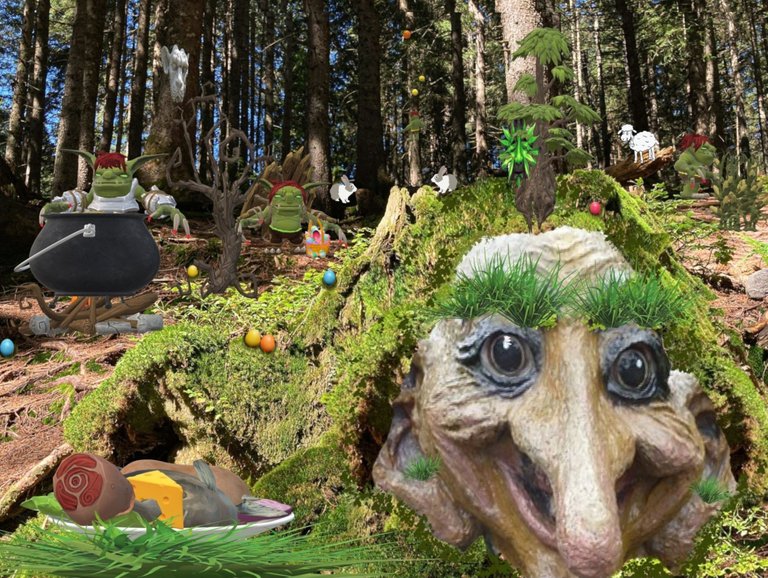
Goblin Magic
The Function of Magic in Culture
Depending on your perspective, the collage I created this week depicts a fantasy scene, or a community of goblins going about their goblin lives. The lines between fantasy, magic, belief and reality are not clear. An article in the Cambridge Encyclopedia of Anthropology, written by social anthropologist Matteo Benussi, asserts that, "Magic is one of the most puzzling phenomena studied by social scientists". Benussi explains that even in modern, technologically advanced cultures, magic finds acceptance.
Tree of Life, Kabbalah
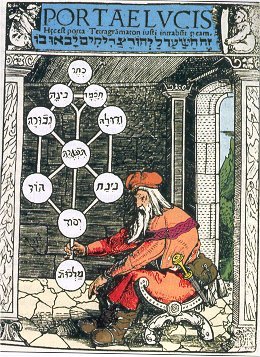
Image credit: Medieval, public domain.
The lines between magic, mysticism and religion, especially, overlap. Benussi explains that the term magic:"...has come to incorporate elements that elsewhere would fall under the category of ‘religion’, such as Kabbalah (a Jewish mystical tradition) or Yoga (a set of spiritual doctrines emerged from within Indic Dharmic faiths)."
Himalayan Yogi
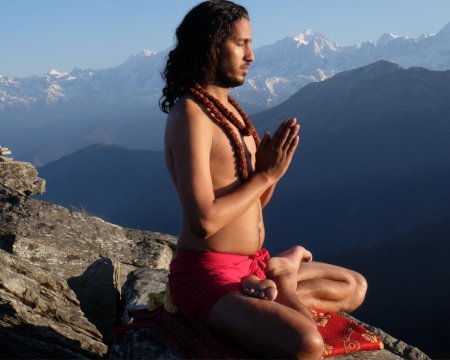
Image credit: Yogainrishikesh. Used under CC 4.0 license.
Magic Defined
As imprecise as it may be, a definition of what we mean by 'magic' must be attempted. Benussi tentatively suggests this working definition, subject to modification: "a set of activities and technologies intended to manipulate invisible or immaterial agencies and energies, not recognised by science, to an advantageous end." Wow, that's a mouthful. However even with this circuitous and tentative description, Benussi cautions that this definition is not all-encompassing.
Bronislaw Malinowski Among the Trobriand Tribe
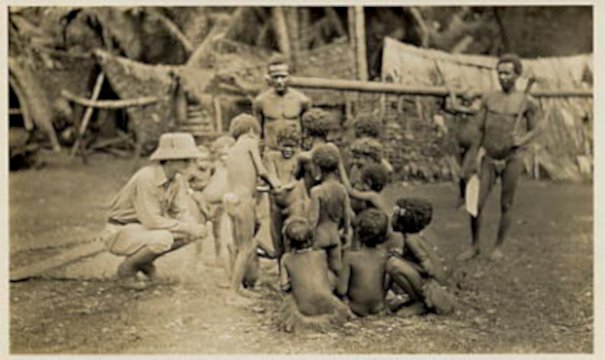
Image credit: Anonymous.1918. Public domain.
One of the giants in the field of anthropology whose research involved magic and religion, Bronislaw Malinowski had a firm idea about magic. He used as a model for his theory the beliefs of the Trobriand people (Trobriand Islands, Papua, New Guinea). Malinowski noted that when fishing, the islanders used empirical knowledge to navigate familiar waters. They depended on acquired information and skill to bring in a haul each day and to describe their experience. However, when they ventured further out to sea, where danger and uncertainty lay, they used magic to explain events.
Malinowski and Trobriands
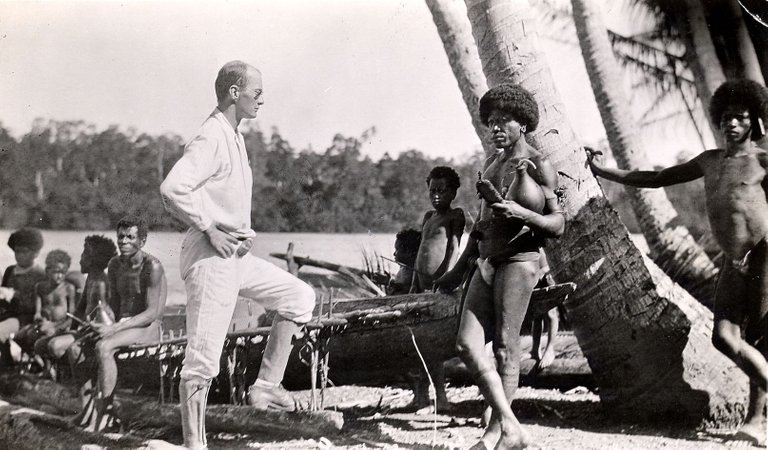
Image credit: Unknown (maybe Stanisław Ignacy Witkiewicz, 1885-1939). Source: Bronislaw Malinowski: Das Geschlechtsleben der Wilden, Leipzug/Zürich 1928, S. 225. Used under CC 4.0 license.
According to Malinowski's theory of magic, the Trobriand Islanders resort to superstition and belief when the certainty of empirical explanation eludes. Magic, then, is a way to deal with anxiety. They perform magical rites to insure good luck. Thus reassured, they are able to allay fear. The rites give them the confidence to attack their practical work with energy and use that energy for productive, empirically-founded activities.(Summary of Malinowski's views provided by George C. Homans, Harvard University)

Grýla and Leppaluði, Icelandic Christmas Trolls
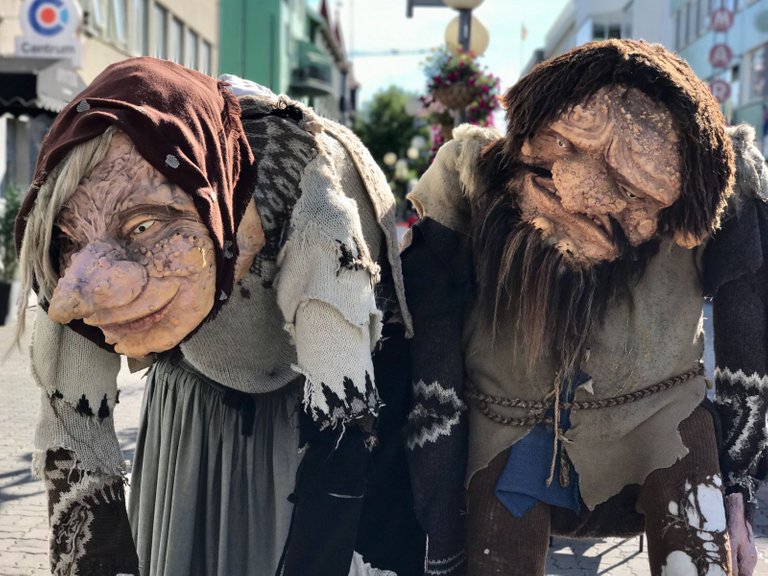
Image credit: Andrii Gladii. Used under CC 4.0 license. It is said that at Christmas time, the cannibal troll, Grýla, comes into town and steals children who misbehave. She takes them home with her and cooks them in her caldron. This makes coal in the stocking seem rather benign, doesn't it?

The Magic People of Iceland
Branislaw Malinowski's most significant work went beyond his theory of magic. His Theory of Needs, states that, "culture exists to meet the universal biological, psychological and social needs of an individual". What would Malinowski make of Iceland, where 62% of the people claim to believe in elves? What cultural need does this belief satisfy? One explanation might be, that there actually are elves. Another explanation could be that the Icelandic people are wedded to tradition through their saga and legends as few cultures are. Iceland is, culturally, a relatively homogeneous society.
Álfaborg, City of the Elves, Iceland

Image credit: Álfaborg. Used under CC 3.0 license. This magical rock is located at the mouth of a fjord in East Iceland. It is also known as the City of the Hidden People. It is believed that the ruling class of elves lives here. It is also believed that the area around Álfaborg is abundant in elf life.
If we are to consider Manislowski's Theory of Needs, perhaps the Icelandic belief in elves, handed down through oral tradition, helps to strengthen social cohesion.
But don't tell that to someone who actually does believe in elves. They believe, they will tell you, because elves exist as much as you and I do. (Do we exist?)
Irish Little People
Leprechaun Repairing a Shoe
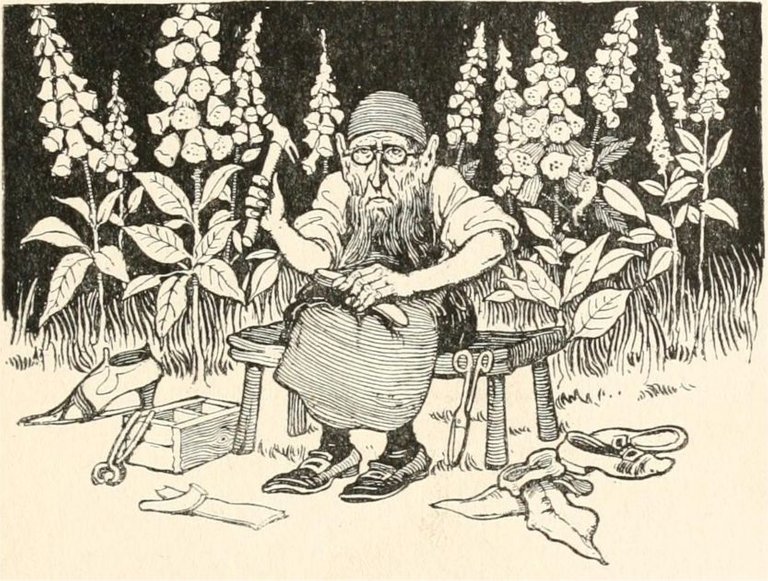
Image credit:Goble Book of Fairy Poetry Lupracaun. 1920. Public domain. If 62% of the people in Iceland believe in Elves, the Irish are not far behind. A 2011 survey showed that one third of Irish people believe leprechauns exist.


My Collage
I'll begin with @shaka's evocative template photo:
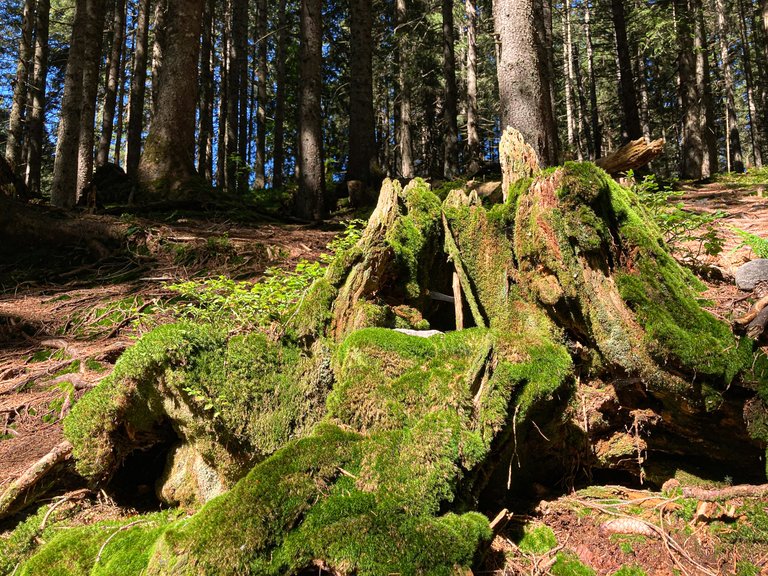
Magic was an inevitable outcome. For me, goblins/trolls were the first and last choice. Once I found the face (Blakey17 on Pixabay  ) that I wanted, I had to figure out how to bury the goblin/troll in the ground. Here's one step:
) that I wanted, I had to figure out how to bury the goblin/troll in the ground. Here's one step:
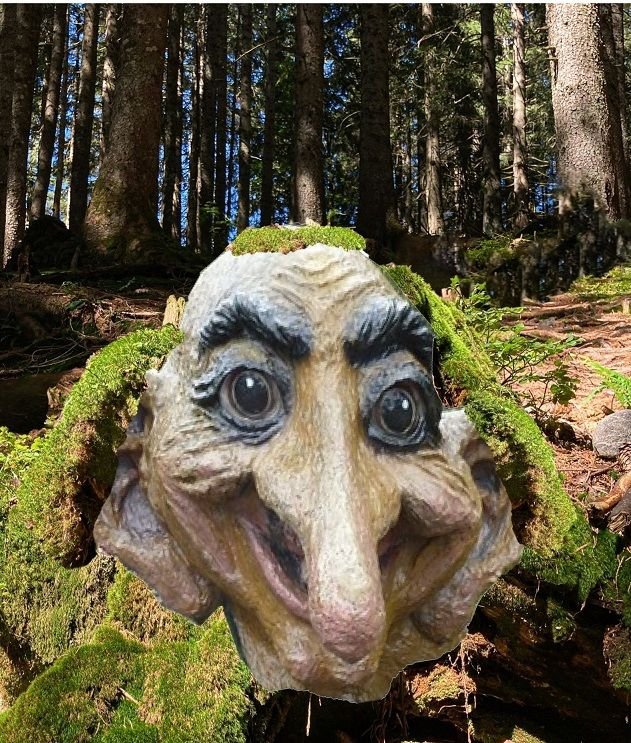
Troll faces on the trees:
Green face: Kellepics on Pixabay
Whitish face: FuxxyDunlop on Pixabay
Easter eggs: Anncapictures on Pixabay
Easter basket: Annelise Art on Pixabay
Lamb: ArtRose on Pixabbay
Bunnies: ZacharyOliver on Pixabay
Embellishments were added by hand, such as nail polish and eyebrows.
I decided this would be the Troll King and other trolls in the picture would work all day to satisfy his needs. They cook. They plant. They climb trees to pick fruit. They hunt for Easter eggs. All my trolls came from Paint 3D, as did the food in the picture. Gimp and Paint were also used.
I hope you have fun visiting my troll community.

Thank you @shaka and the LMAC community, which is just one exciting corner of the larger Hive community. Rules for the contest can be found at @shaka's blog. We have a Discord channel, and a school with lessons written by our amazingly patient teacher, @quantumg. All you need to enter this contest is imagination and enthusiasm. There's a good chance you will win a prize. There is 100% chance you will have fun.




Hello, interesting friend, the history of the Elves in different cultures, and the magic that they used as a way of life among them to face daily life situations. Magic is practiced a lot today, some use it for good and others to do evil to other people. Good luck in the contest.
Thank you my friend, @cetb2008. What is magic? Friendship? Mysterious beings? Art? I don't know. But it feels a little like magic when my friends drop by my blog :))
Thank you for your good wishes.
I remember seeing piles of rocks stacked up in Norway to keep trolls away. It worked, I never saw one.
Your collage is frighteningly cute and of course, I love your artwork.
I wish you all the luck, not just in the art world.
Kindest regards.
Your fan,
Muelli. 😎
:))
You are a treat, always!
Thank you for that kind estimation. I don't think the collage came out so well this week, but I did like learning about magic :)
I think you and your alter ego will do very well this week. I've already peaked. Wonderful to have you back!
Your friend,
AG
I knew a very beautiful woman, who, I must make it clear, was absolutely honest.
This woman told me that she lived in the country until she was fifteen years old and that her parents forced her to go to the city to live with her aunt because of a goblin. Here, people call them encantados.
One day, while this beautiful woman was washing clothes in the river, a crystal castle emerged from the water. In the castle, tiny people were having a party and a very elegant goblin began to beckon her to come closer. Her cousins pulled her out of the river before she drowned, for she, on an irresistible impulse, heeded his call.
For her, this story was true. So true that it cost her a small exile.
Fiction theorists argue that the boundaries between fact and fiction are porous, and that the boundaries between fact, fiction and myth can be very fuzzy and are not fixed, neither from culture to culture, nor from person to person. This is an exciting topic and I love how you deal with it in your post.
I also had a lot of fun visiting your magical world.
Your goblin with grass eyebrows is absolutely cool and adorable.
Thank you for that fascinating comment. What is a delusion? What is an illusion? Is your reality my reality? Are we in a dream? Defining magic, distinguishing it from religion. You are right. The line is porous, and even if we don't cross that line there is a kind of truth in the exploration.
I don't really like the way my collage came out, but I do like those eyebrows :)) Thank you for noticing.
Thank you for visiting and commenting my friend.
Love how incorporated Easter in your collage A.G. Being a believer in the little people your theme is perfect.
I almost missed Easter this year. I live in a bubble here. What a strange year this has been. Oh yes, you won't hear me deny little people. I do not want to tempt fate :)
Thank you for your kind comment and for your generosity. Happy Easter, @redheadpei .
Most welcome A.G.🧚♀️ It has been a year I thought I would never live long enough to experience. It’s like something out of. Futuristic movie...many eons in the future. Hopefully these vaccinated are a light at the end of the tunnel.
Happy Easter 🙏
🌷 🍀 🌸 🌹 🌺 🌻 🌼 🌾 🌿 🍀 🌷
Very nice fantasy story and collage. Wish you luck in the contest. 😎
Thank you my friend. The collage did not come out so well, but I did enjoy learning about magic. Always this exercise is fun.
Wishing you peaceful and productive day. See you next week for the next challenge!
Hello, as always a spectacle your collage.
I would like to go to that mountain is Iceland, I am latina and of course I believe that there are supernatural beings that are in this world with us.
Thank you my friend. I would love to go to Iceland,also. Not just the mountain but the land is so moon like. However, unless I can hire a private jet, I don't think that's happening :))
I wish you good luck in today's contest!
Your collage is not only really funny and unique, the idea is also very ingenious.
It fascinated me, as your collages often do.
But what's more, the education part was very interessting and a joy to read, too.
Well, if one get too analytical about magic, one will only raise more theories and questions.
We always ask ourselves these questions about what really exists with the help of our limited view of reality. Until we still have to clarify why existence exists, we cannot define what ever exists. Behind this unknown fact probably lies the answer about what really can exist.
But it is also a fact that we humans perceive reality subjectively. This subjective perception is based on collective evaluations, which ist also culturally influenced.
If one society assumes the existence of elves as possible, why should this assumption be less correct than the assumption of another society which denies the existence of elves?
There is a story that tells how native americans were initially unable to see the ships of Columbus and his crew when they anchored offshore in the distance. Because these ships were completely different from anything they had seen before. It was only after the shaman had looked out for a long time because he had noticed the movement of the water that he could finally see them. After pointing this out to the others of his tribe, they could see the ships too.
If this made the Trobriand tribe survive to this day, their magic and their spiritual enlightenment must be great! :-)
My dear @quantumg,
The power of your words. I look at my collage through your filter and think, yeah, maybe it's not so bad :))
It's funny, I read you words after I had a telephone conversation with my sister-in-law. She lost her brother recently. We're at the age where death is not surprising but still takes its toll on the survivors. She was asking me about religion, about what she had been taught as a child and how the truth of those religious stories doesn't seem to hold up, now, as she thinks about her brother. My words to her were not very different from this:
I tried to tell her that the truth is not in the details. That if she did some reading in comparative religion she would see the same striving, and people arriving at essentially the same answers. Details are different, but the truth is the same. It is that truth that gets people through. And maybe there's something to that truth, because it has some universality.
Mind you, I'm not 'religious'. But I'm not irreligious, either. I think what you wrote is not very different from what I tried to impart. It's interesting how these ideas come together on the same day.
Maybe that's the magic :))
I hope I don't sound too silly. I do enjoy "talking" to you.
Good luck tonight with the dpoll.
Regards,
The truth is, there is no filter at all !!! :-)
I send you deep-felt condolences.❤️
I think so too.
In fact, it is not just that all comparable religions make similar statements about what comes after life, in example. Even the pagan religions, such as Buddhism, Hinduism, Asatru, religions of various South American indigenous people, have very similar ideas about the basis of what happens afterwards. An obvious pattern.
The different religions only differ in their statements about the "future" after death. But they all know a soul or a kind of soul. And all of them are talking about a journey that the soul begins then.
The pattern becomes even clearer when you consider that many of these religions, due to their geographical distance, could not influence each other at all.
Maybe we are right in our assumptions, since the universe even sends us a synchronicity (or seriality). xD
🌞🌟🌷 🌸🌟🌞
So beautiful
Thank you very much! I appreciate that :)